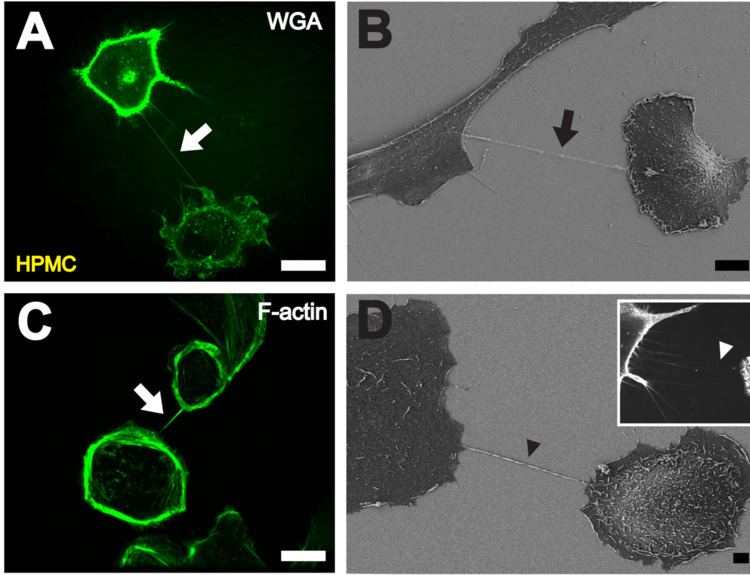 | ||
The term Membrane nanotubes, membrane nanotubules or cytoneme has been applied to protrusions that extend from the plasma membrane that enable different animal cells to touch over long distances, sometimes over 100 μm between T cells.
Two types of structures have been called nanotubes. The first type are less than 0.7 micrometres in diameter, contain actin and carry portions of plasma membrane between cells in both directions. The second type are larger (>0.7 μm), contain both actin and microtubules and can carry components of the cytoplasm between cells, such as vesicles and organelles.
These structures may be involved in cell-to-cell communication, transfer of nucleic acids between cells in a tissue, and the spread of pathogens or toxins such as HIV and prions. Membrane nanotubes were first described in a 1999 Cell article examining the development of Drosophila melanogaster wing imaginal discs. More recently, a Science article published in 2004 described structures that connected various types of immune cell together, as well as connections between cells in tissue culture.
Some dendritic cells (DC) and THP-1 monocytes have been shown to connect via Tunneling Nanotubules (TNT) and display evidence of calcium flux when exposed to bacterial or mechanical stimuli. TNT mediated signaling has shown to produce spreading in target cells, similar to the lamellipodia produced when DC cells are exposed to bacterial products. The TNT demonstrated in this study propagated at initial speed of 35 micrometers/second and have shown to connect THP-1 monocytes with nanotubules up to 100 micrometers long.
Structures, called plasmodesmata, have been identified that do function as channels that interconnect plant cells and stromules interconnect plastids.
Vesicular transport in membrane nanotubes has been modeled utilizing a continuum approach.
A variety of synthetic nanotubes, based on stacking of cyclic peptides and other cyclic molecules have been investigated.
